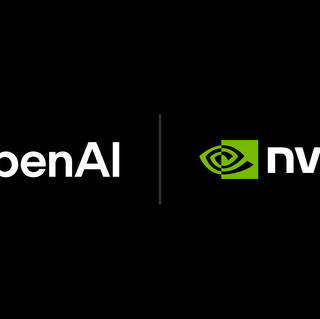Nvidia’s $100B AI Data Center Project Set to Redefine the Future of Artificial Intelligence

Nvidia’s $100 Billion Power Move: Building Tomorrow’s Supercharged AI Data Centers with OpenAI
A Record-breaking Investment Unveiled
Nvidia has announced a landmark commitment to invest $100 billion in partnership with OpenAI. This initiative paves the way for the creation of unprecedented infrastructure—establishing data centers with a colossal aggregate capacity of 10 gigawatts, positioning the alliance at the forefront of computational innovation. The scale of this endeavor, drawing direct comparisons to the world’s most ambitious technological mega-projects, exemplifies the rapidly escalating demand for advanced AI capabilities on a global scale.
The sheer magnitude of energy allocated—10 gigawatts—equates to the electricity requirements of approximately 7.5 million average U.S. households. This metric offers a tangible glimpse into the massive operational scale and energy footprint underpinning next-generation artificial intelligence systems. Each phase of the infrastructure buildout is tied to incremental funding, ensuring measured and result-oriented progress from inception through to operational deployment.
Construction will commence with initial facilities slated to become operational in the latter half of the coming year. The rollout will be staggered, with capital released as each gigawatt of capacity is brought online. This phased approach allows for iterative improvements and stringent oversight across all project milestones, minimizing operational risks while accelerating time-to-delivery for critical advances in AI infrastructure.
Pushing the Boundaries with Next-Generation Hardware
Central to the architecture is the incorporation of Nvidia’s latest platform, named after the renowned astronomer Vera Rubin. The infrastructure will harness proprietary chips and interconnects optimized not only for raw computational horsepower but also for minimizing latency in distributed training of ever-larger machine learning models. This new platform arrives as the company’s response to the surging global appetite for high-performance, scalable GPU clusters, vital for both training and inference in AI workloads.
By aligning their hardware development roadmap with OpenAI’s evolving requirements, Nvidia aims to achieve a fluid synergy between software and silicon. This co-optimization is expected to yield faster, more efficient scaling of AI models—particularly those pushing the boundaries of what neural networks and generative platforms can achieve at planetary scale.
The Vera Rubin platform represents a significant technological leap, designed to meet the intensive demands of advanced neural architectures. As each new center comes online, integration with the latest advancements in cooling, energy management, and data throughput is expected, enabling both partners to set new industry standards for efficiency and performance.
Strategic Vision and Industry Impact
The path set forth by Nvidia and OpenAI is not only about powering growth in artificial intelligence, but also about influencing the technological infrastructure of tomorrow’s digital economy. The scale and sophistication of these new facilities place them firmly at the intersection of data, energy, and innovation sectors, with ripple effects expected across global supply chains, regional power grids, and digital service providers.
For OpenAI, the deepened alliance solidifies access to tailored, world-class computing resources. This alignment is aimed at accelerating the training and deployment of increasingly complex models that underpin services with millions of active users worldwide. For Nvidia, the arrangement fortifies its leadership in the silicon and AI systems markets while unlocking new opportunities for ecosystem development in areas ranging from networking fabrics to energy optimization.
The partnership highlights a shared ethos between both organizations: the belief that massive, reliable compute infrastructure is foundational to future breakthroughs in artificial intelligence. By anchoring investment to the physical deployment of energy and hardware, both companies demonstrate a commitment to pragmatic scalability and measurable progress.
Gradual Rollout and Future Outlook
The methodical, staged construction ensures agility in adapting to unforeseen challenges, whether technical, logistical, or regulatory. As facilities come online in the second half of the coming year and beyond, the partnership is positioned to set new benchmarks for speed, scalability, and reliability in AI data center deployment.
Market watchers are closely tracking the evolution of this project, as its successful completion could define best practices for future AI data center infrastructure worldwide. The commitment to gradual, needs-based funding underscores a disciplined financial strategy, designed to maximize return on investment while fostering innovation at every stage.
With energy requirements rivaling metropolitan utility demands and technology drawn from the cutting edge of silicon engineering, this collaboration between two of the most influential entities in artificial intelligence and hardware represents a bold new chapter in digital infrastructure. Observers can expect a cascade of advancements not only in computational speed and power, but also in the business models and economic opportunities that these capabilities unlock.
